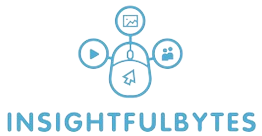Understanding Enterprise AI at the Edge
In recent years, the convergence of artificial intelligence (AI) and edge computing has transformed the way organizations operate. Enterprise AI at the edge refers to deploying AI capabilities close to the data source, rather than relying entirely on centralized cloud processing. This evolution is crucial for businesses looking to enhance real-time decision-making and optimize resource utilization.
The Role of Hybrid Cloud in Enterprise AI
Hybrid cloud solutions combine private and public clouds, enabling enterprises to leverage the strengths of both environments. This model provides flexibility, scalability, and enhanced security while facilitating the deployment of edge AI solutions.
Key Components of Hybrid Cloud and Edge AI
- Data Management: Efficient data handling is essential for AI applications. Hybrid cloud environments allow enterprises to manage data across various locations securely.
- Connectivity: Reliable connectivity between edge devices and the cloud is vital for seamless data transfer and processing.
- Scalability: The hybrid cloud allows businesses to scale their AI applications according to demand, ensuring optimal performance at all times.
Benefits of Enterprise AI at the Edge
1. Real-Time Decision Making
Deploying AI at the edge empowers organizations to analyze data instantly, leading to quicker decision-making. For instance, in manufacturing, AI-driven predictive maintenance can significantly reduce downtime and enhance productivity.
2. Reduced Latency
Processing data closer to the source results in lower latency and faster response times. In applications such as autonomous vehicles or healthcare monitoring systems, reduced latency can be life-saving.
3. Enhanced Security and Privacy
By processing data locally, enterprises can minimize data transmission to the cloud, reducing exposure to potential breaches and enhancing privacy.
Challenges in Implementing AI at the Edge in Hybrid Cloud
1. Complexity of Integration
Integrating AI systems with existing infrastructure can be challenging. Organizations must ensure compatibility between edge devices and cloud platforms.
2. Data Management Issues
Managing data across multiple environments can create complexities, particularly regarding data consistency and compliance with regulations.
3. Limited Resources at the Edge
Edge devices often have limited computational resources. Organizations must carefully assess the capabilities required for their AI applications.
Future Predictions for Enterprise AI at the Edge
1. Increased Adoption of IoT Devices
The growth of the Internet of Things (IoT) will drive the demand for edge AI solutions. As more devices generate data, the need for real-time processing will become paramount.
2. Enhanced AI Algorithms
Future advancements in AI algorithms will enable better performance at the edge, with more capabilities being pushed down to local devices.
3. Greater Focus on Security
As cyber threats evolve, organizations will prioritize security in their AI edge strategies, implementing robust measures to protect sensitive data.
Real-World Examples of Enterprise AI at the Edge
Many enterprises have begun leveraging AI at the edge within hybrid cloud environments:
- Retail: Retailers use AI-powered cameras in stores to analyze customer behavior in real time, optimizing inventory and enhancing customer experiences.
- Healthcare: Hospitals deploy AI systems for real-time patient monitoring, improving patient outcomes and operational efficiency.
- Manufacturing: AI-driven predictive analytics are used to monitor machinery, significantly reducing maintenance costs and downtime.
Conclusion
In conclusion, enterprise AI at the edge in hybrid cloud environments presents numerous opportunities and challenges. As businesses continue to navigate this landscape, those embracing the integration of AI and edge computing will likely gain a competitive advantage. The future is bright, with the potential for transformative impacts across various industries as organizations adopt these innovative technologies.
